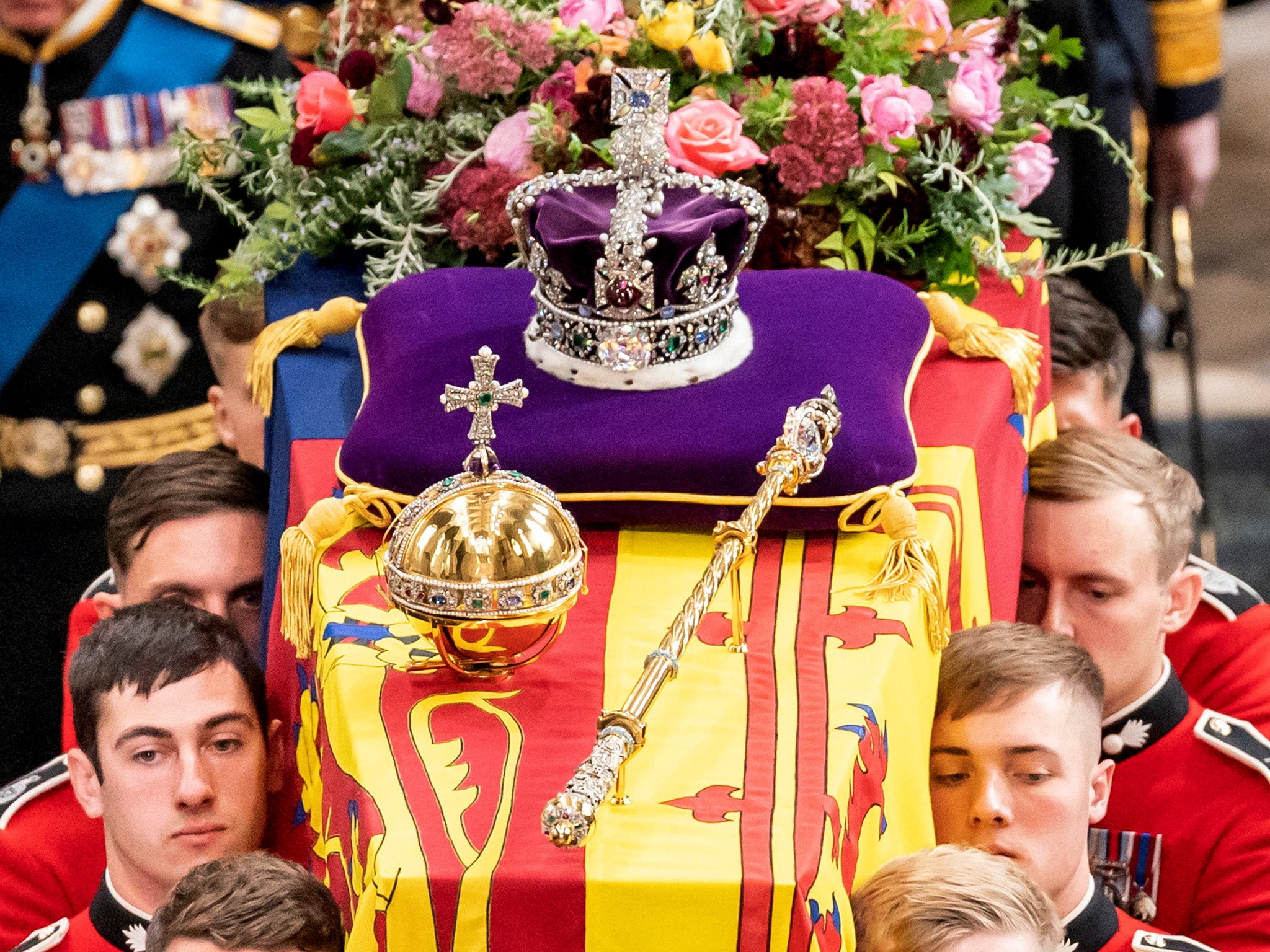How the Queen’s orb, crown and sceptre were kept safe during her funeral
Royal relics have a history of disrupting a monarch’s final procession
Your support helps us to tell the story
From reproductive rights to climate change to Big Tech, The Independent is on the ground when the story is developing. Whether it's investigating the financials of Elon Musk's pro-Trump PAC or producing our latest documentary, 'The A Word', which shines a light on the American women fighting for reproductive rights, we know how important it is to parse out the facts from the messaging.
At such a critical moment in US history, we need reporters on the ground. Your donation allows us to keep sending journalists to speak to both sides of the story.
The Independent is trusted by Americans across the entire political spectrum. And unlike many other quality news outlets, we choose not to lock Americans out of our reporting and analysis with paywalls. We believe quality journalism should be available to everyone, paid for by those who can afford it.
Your support makes all the difference.Symbols of the monarchy that adorned the Queen’s coffin before her burial were fixed in place to avoid any unfortunate incidents in a long series of processions.
The Imperial State Crown, Sovereign’s Orb and Sceptre stayed with the Queen from her coronation until moments before her coffin was lowered into the ground in St George’s Chapel on Monday.
The royal relics, which are usually kept in the Tower of London, were placed on top of Her Majesty’s coffin for her lying-in-state, travelling from Westminster Hall to Westminster Abbey then on to Windsor.
Viewers of the funeral were puzzled by how the trio of objects, one of which is spherical, stayed in place throughout the journey.
Footage showed that special fixtures had been attached to the coffin to secure them in place.

The orb was kept steady by a small spike on its bottom that fit into a discreet mounting on top of the coffin’s oak surface.
The crown sat atop a purple pillow, a seemingly precarious spot that was stabilised by a firm protruding section on which the monarch’s headwear was mounted.
Rods protruding discreetly from beneath the Royal Standard flag held the sceptre slightly above the lid of the lead-lined coffin until it was ready to be removed.

The securing of the relics is an attempt to avoid any embarrassing moments during what is meant to be a sombre occasion, and one watched the world over.
At a previous royal funeral, that of the Queen’s grandfather George V in 1936, the maltese cross that adorned the crown in his reign fell off during the procession.
The cross was set with a sapphire claimed to have belonged to Edward the Confessor back in the eleventh century.
It fell from the crown as the cortege turned into New Palace Yard outside Westminster Hall and was feared to be a bad omen. Just one year later the greatest crisis in modern royal history took place when Edward VIII abdicated.

The three relics that rested on the Queen’s coffin make up part of the Crown Jewels and date back as far as the 1600s – when the Stuarts were on the throne.
The Sovereign’s Sceptre with Cross has been used at every coronation since Charles II’s in 1661. The Sovereign’s Orb dates from the same time.
Both objects are traditionally given to a monarch on their coronation to represent their powers and responsibilities.
The Imperial State Crown has been a tradition for centuries, though the current one was made in 1937 to replace the crown made in 1838 for Queen Victoria.
The removal of the three relics from the Queen’s coffin symbolised the end of her public service.
Join our commenting forum
Join thought-provoking conversations, follow other Independent readers and see their replies
Comments